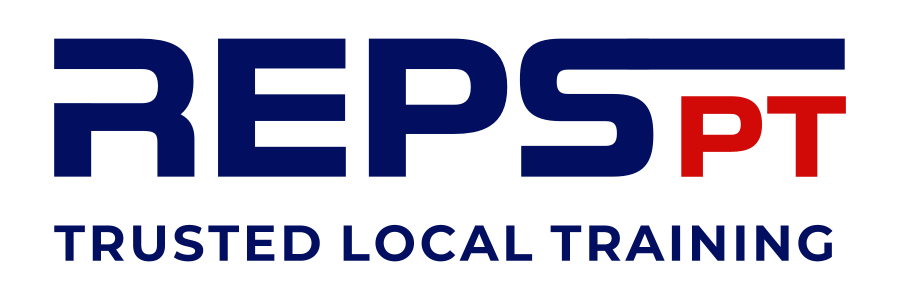Jogging on a treadmill is a fantastic way to improve cardiovascular health, build endurance, and support weight management, all while enjoying the comfort of a controlled environment. Whether you're an experienced runner or just getting started, treadmill jogging offers several benefits. The key is maintaining proper form to prevent injury and maximise the effectiveness of your workout. Here's a breakdown of the benefits and form for a treadmill jog.
Benefits of a Treadmill Jog
-
Improved Cardiovascular Health
Jogging on a treadmill is an excellent cardiovascular workout. It strengthens the heart, improves blood circulation, and helps reduce the risk of heart disease. As you increase the intensity and duration of your jog, your heart and lungs become more efficient, improving overall cardiovascular fitness. -
Weight Loss and Fat Burning
Jogging is an effective calorie-burning exercise. When done at a steady pace, it can help you burn a significant number of calories, contributing to weight loss. For those looking to shed excess pounds or maintain a healthy weight, regular treadmill jogging, combined with a balanced diet, is a powerful tool. -
Builds Endurance and Stamina
One of the greatest benefits of treadmill jogging is that it helps increase stamina and endurance. By gradually increasing the time or intensity of your jogs, you can improve your aerobic capacity, which will help you handle more demanding physical activities both on and off the treadmill. -
Joint Health
Treadmill jogging is lower impact than running on hard outdoor surfaces like concrete. Most treadmills feature a cushioned deck that helps absorb shock, reducing the stress on your knees, hips, and lower back. This makes it a great option for those with joint concerns or for those who want to avoid the pounding of outdoor running. -
Mental Health Benefits
Like any form of aerobic exercise, treadmill jogging releases endorphins, which help to elevate mood and reduce stress. It can be an excellent way to clear your mind, relieve anxiety, and boost your mental well-being. Jogging has also been shown to improve sleep quality and help combat symptoms of depression. -
Convenience and Accessibility
One of the biggest advantages of jogging on a treadmill is the convenience. Whether it's too hot, cold, rainy, or dark outside, you can jog indoors at any time of the day or night. The treadmill offers a controlled environment, so you don’t have to worry about traffic, uneven surfaces, or changing weather conditions. -
Customisable Workout
Treadmills allow you to control the speed and incline, enabling you to tailor your workout to meet your fitness goals. Whether you’re looking for a steady jog or an interval-style workout, you can easily adjust the settings to challenge yourself and progress over time.
Proper Form for a Treadmill Jog
To get the most out of your treadmill jog and avoid injury, it's important to maintain good form. Here are some tips to help you jog with proper technique:
-
Posture and Alignment
Keep your head up and your gaze forward, avoiding the temptation to look down at your feet. This will help maintain good posture and reduce the strain on your neck and back. Your shoulders should be relaxed, not hunched, and your chest should stay open to allow for deep, efficient breathing. -
Engage Your Core
A strong core is essential for stability and proper form while jogging. Make sure to tighten your abdominal muscles slightly, as this helps protect your lower back and keeps your body aligned. A firm core also helps you maintain a steady, controlled movement throughout your jog. -
Arm Movement
Swing your arms naturally as you jog, with your elbows bent at around a 90-degree angle. Your hands should remain relaxed—avoid clenching your fists. Proper arm movement helps propel your body forward and contributes to overall momentum, making your jog more efficient. -
Foot Strike
Aim for a midfoot strike (landing on the middle of your foot) rather than landing on your heels or toes. This helps absorb shock and distribute the impact more evenly across your joints. Try to keep your strides light and fluid, avoiding heavy or pounding steps that can increase the risk of injury. -
Stride Length and Speed
Your stride should be natural and comfortable, with each step landing directly beneath your body. Avoid overstriding (taking too long of a step) or undershooting (taking tiny steps), as both can lead to inefficient running mechanics and strain on your muscles. Set your treadmill speed to a pace that allows you to maintain good form throughout your jog. -
Avoid Holding the Handrails
It can be tempting to hold onto the treadmill’s handrails for balance, but doing so can interfere with your posture and reduce the intensity of your workout. Try to avoid gripping the handrails tightly or leaning forward. If you need balance, use them lightly for a gentle touch, but keep your upper body engaged and your core active. -
Breathe Properly
Proper breathing is key to maintaining endurance and preventing fatigue. Try to breathe deeply and rhythmically, ensuring you're getting enough oxygen to fuel your muscles. Inhaling through your nose and exhaling through your mouth can help you maintain steady breathing during your jog.
Conclusion
Treadmill jogging is a fantastic way to improve your cardiovascular fitness, burn calories, and build endurance in a controlled, convenient environment. It’s a versatile exercise that can be adapted to meet your specific fitness goals, whether you’re training for a race or simply looking to maintain a healthy lifestyle.
By maintaining proper form—such as standing tall, engaging your core, using your arms, and avoiding handrails—you can reduce the risk of injury and make your treadmill jog more effective. With consistent effort, you’ll enjoy the many benefits of jogging, including improved heart health, weight management, and a boost to your mental well-being.

